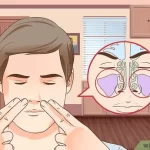Your nails are more than just a beauty feature; they can reveal a lot about your overall health. If you’ve noticed changes in the color, texture, or strength of your nails, it could be a sign that your body is lacking essential nutrients. In this article, we’ll explore the effects of nutrient deficiencies on your nails and what you can do to keep them healthy and strong.

1. Brittle or Weak Nails
Deficiency: Biotin (Vitamin B7)
Biotin is essential for healthy nail growth. If you’re low on this vitamin, you might notice that your nails are more prone to splitting, breaking, or becoming thin.
What to Do:
Incorporate biotin-rich foods like eggs, nuts, seeds, and avocados into your diet, or consider a biotin supplement to strengthen your nails.
2. White Spots on Nails
Deficiency: Zinc
White spots on your nails, also known as leukonychia, can be a sign of zinc deficiency. Zinc is vital for cell growth and repair, including your nails.
What to Do:
Include zinc-rich foods in your diet like pumpkin seeds, chickpeas, lentils, and fortified cereals.
3. Spoon-Shaped Nails (Koilonychia)
Deficiency: Iron
If your nails curve up like a spoon, you may have an iron deficiency. Iron helps carry oxygen to your cells, and a lack of it can result in brittle, spoon-shaped nails.
What to Do:
Consume iron-rich foods like spinach, red meat, beans, and lentils. Pairing these with vitamin C can help boost iron absorption.
4. Pale or Discolored Nails
Deficiency: Vitamin B12 and Folate
Pale nails can indicate anemia, often caused by a lack of vitamin B12 or folate. Both of these nutrients are important for healthy red blood cells, which keep your nails strong and healthy in color.
What to Do:
Add foods like leafy greens, eggs, fortified cereals, and lean meats to boost B12 and folate levels.
5. Slow Nail Growth
Deficiency: Protein
Protein is the building block for keratin, the protein that makes up your nails. If you’re not getting enough protein in your diet, your nails may grow slowly or appear weak and thin.
What to Do:
Ensure you’re eating enough high-protein foods like chicken, fish, eggs, tofu, and legumes.
6. Ridged or Pitted Nails
Deficiency: Magnesium
Horizontal or vertical ridges on the nails could be a sign of magnesium deficiency, which can interfere with nail growth and texture.
What to Do:
Boost your magnesium intake with foods like almonds, leafy greens, whole grains, and dark chocolate.
7. Dry, Cracked Nails
Deficiency: Omega-3 Fatty Acids
Omega-3 fatty acids are important for keeping your nails hydrated. If your nails are dry and prone to cracking, it could mean you’re not getting enough healthy fats in your diet.
What to Do:
Incorporate more omega-3-rich foods like salmon, flaxseeds, walnuts, and chia seeds into your meals.
8. Yellowing of Nails
Deficiency: Vitamin E
Yellow nails could be a sign of a vitamin E deficiency, as this nutrient helps protect cells from oxidative damage and promotes nail health.
What to Do:
Add vitamin E-rich foods like almonds, sunflower seeds, spinach, and sweet potatoes to your diet.

Conclusion
Your nails can reveal important clues about your overall health, and nutrient deficiencies often show up in the form of changes to their appearance. By paying attention to these signs and adjusting your diet to include nutrient-rich foods, you can keep your nails healthy and strong. If you notice persistent issues with your nails, consult a healthcare provider to check for underlying deficiencies.
Take Care of Your Nails
Boost your nutrition and watch your nails thrive! 🌿✨
Feel free to customize this article for your Pinterest audience or share it on your beauty and health boards!



